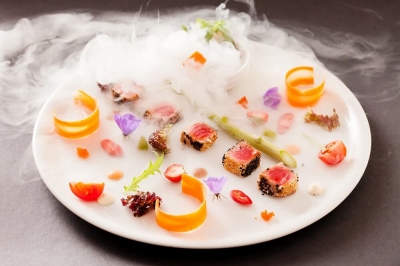
It is a modern style of cooking in which chefs use scientific principles and technology to enhance the flavours and alter the textures of food items. The term ‘molecular gastronomy’ was coined by Hungarian physicist Nicholas Kurti and French chemist Herve This in the 1980s. To practise the techniques of molecular gastronomy, chefs have to be specially trained.
One of the well-known techniques is spherification. It is the process of shaping a liquid such as fruit juice into spheres. The liquid is first mixed with sodium alginate, a chemical. This mixture is then dripped, drop by drop, into a small ball, called‘caviar’. When popped in the mouth, these fruit ‘caviars’ melt, delivering an intense taste.
Using liquid nitrogen to freeze dishes instantly is another technique. Liquid nitrogen has a temperature of -196 ºC (321ºF). So when ice cream is made using this, it freezes very quickly. This reduces the formation of ice crystals, resulting in a creamier ice cream.
Special types of foams can also be created. Traditionally, foams are made with a whisk or an espresso machine (to make coffee froth). But in molecular gastronomy, the substance to be foamed is usually mixed with a stabilizer such as lecithin and then squeezed out through a whipped cream canister fitted with a nitrogen oxide capsule. With this technique, chefs can make truffle foam and top a meat dish with it or make pickle foam to top curd rice.
Picture Credit : Google



